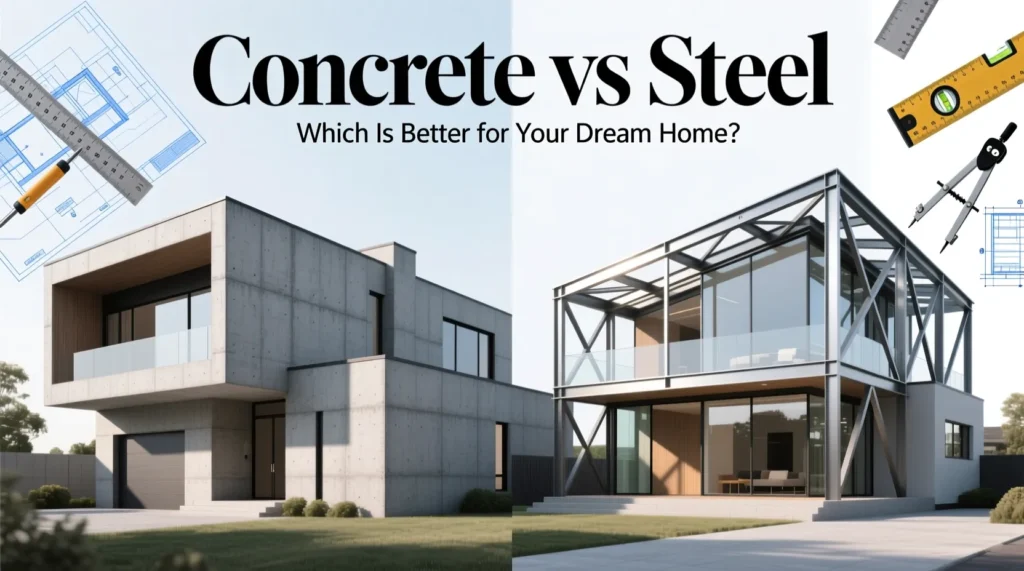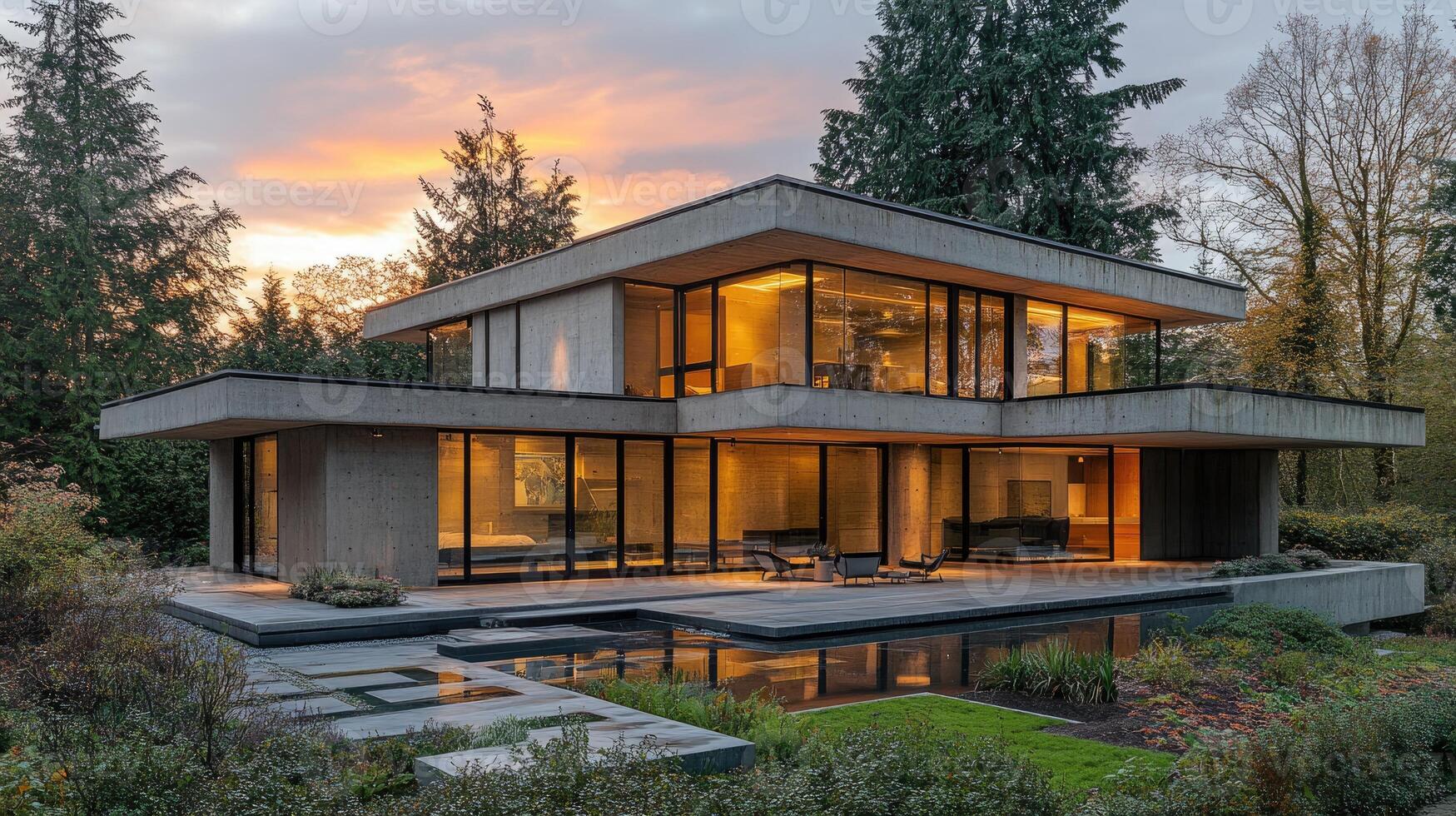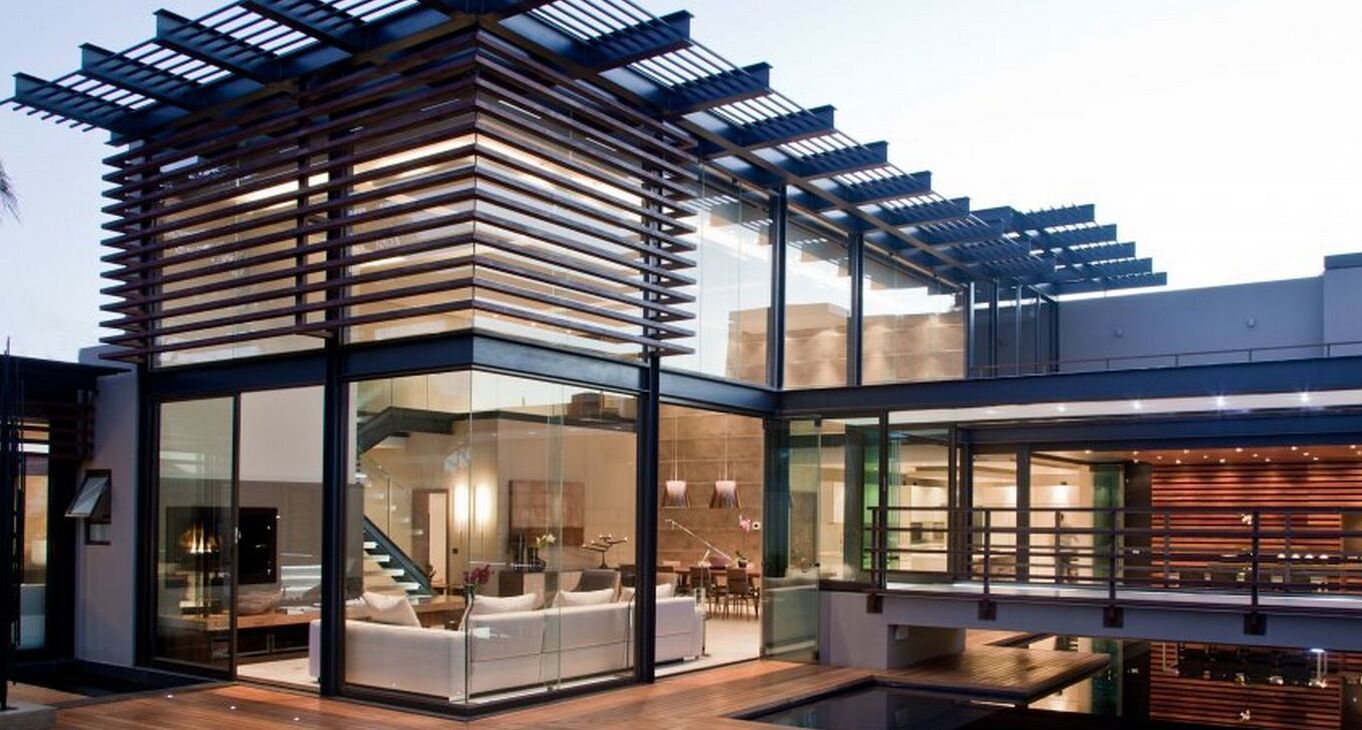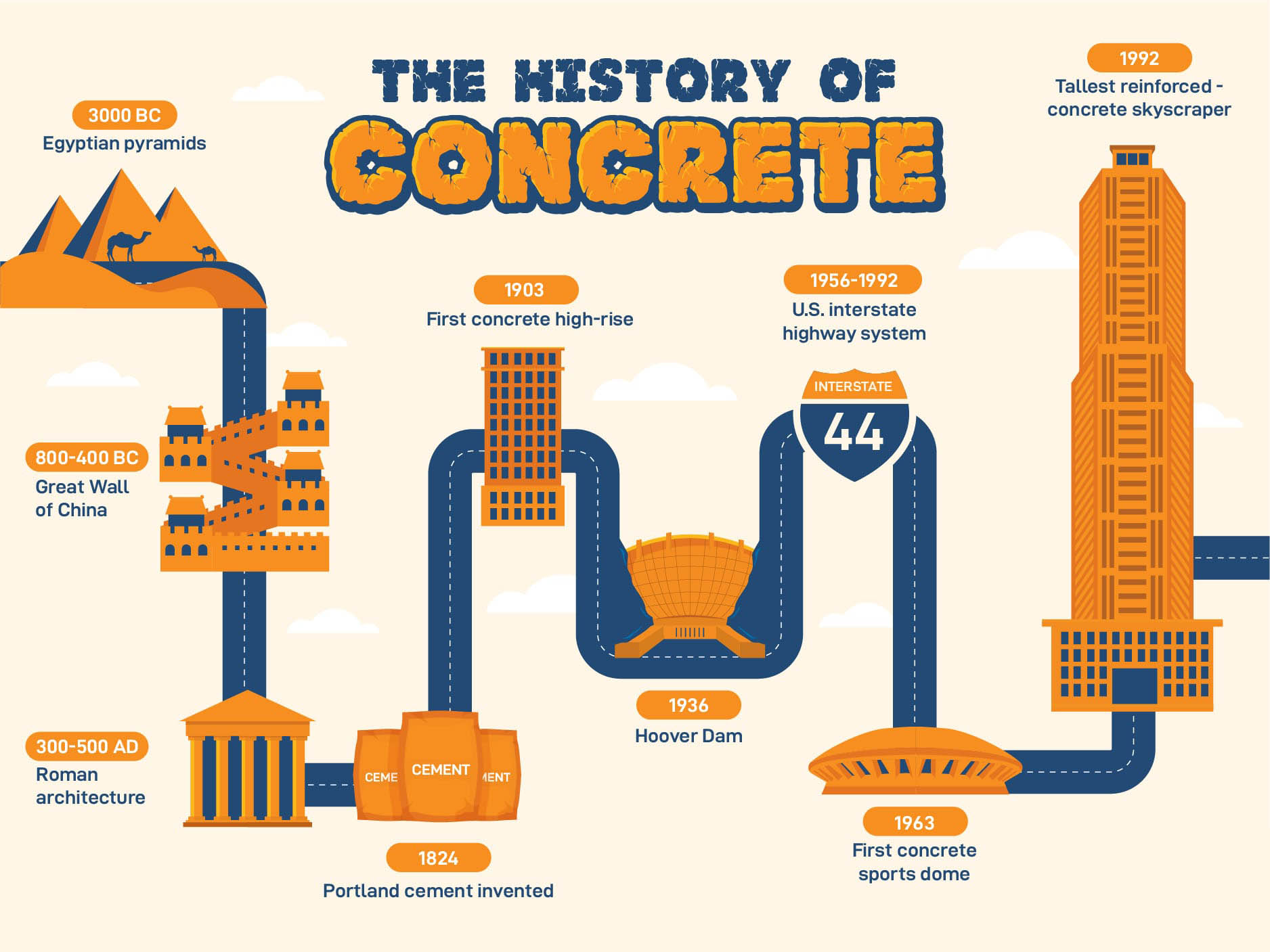Concrete vs Steel: Which Is Better for Building Your Dream Home?

🏠 Introduction
When building your dream home, the choice between concrete and steel is more than just about materials — it defines your home’s strength, aesthetics, and long-term value.
Both are excellent building materials used in modern residential construction. But which one is truly better for you? Let’s explore how these two materials compare in terms of cost, speed, durability, sustainability, and design flexibility — backed by engineering insights and practical experience.
⚖️ What We’re Comparing
Before diving in, let’s clarify the basics:
- Reinforced Concrete (RCC): A composite material of cement, sand, aggregate, and steel reinforcement (rebar). Commonly used for foundations, slabs, and walls.
- Steel Framing: Structural steel beams, columns, and trusses forming the skeleton of a building — often prefabricated or partially built off-site.
Many modern homes even combine the two — using concrete for foundations and slabs, and steel for upper frames or roofs. But let’s compare them head-to-head first.
📊 Concrete vs. Steel — Comparative Overview
| Factor | Reinforced Concrete | Steel Framing |
|---|---|---|
| Strength & Performance | Excellent in compression; ideal for foundations and slabs. | High tensile strength and ductility; great for long spans and lateral loads. |
| Construction Speed | Slow — requires formwork, curing, and weather-dependent steps. | Fast — prefabricated components allow quick on-site assembly. |
| Cost (Initial vs Lifecycle) | Often lower initial material cost, especially for small homes. | Higher material cost, but faster build reduces labor time. |
| Durability & Maintenance | Fire-resistant, corrosion-free, low maintenance if detailed well. | Very durable but needs coatings for fire and corrosion protection. |
| Design Flexibility | Great for heavy structures and curved forms. | Ideal for open spaces, long spans, and modern architectural designs. |
| Sustainability | Cement production has high CO₂ emissions but can use low-carbon mixes. | Highly recyclable; modern steel often contains recycled content. |
📈 Quick Visual Comparison
⭐ Concrete vs Steel — Relative Performance
| Attribute | Concrete | Steel |
|---|---|---|
| Cost (Initial) | ★★★★☆ | ★★★☆☆ |
| Construction Speed | ★★☆☆☆ | ★★★★★ |
| Durability & Maintenance | ★★★★★ | ★★★★☆ |
| Design Flexibility | ★★★☆☆ | ★★★★★ |
| Sustainability | ★★★★☆ | ★★★☆☆ |
🧱 When Concrete Might Be Better
Concrete is one of the most used materials in home construction — and for good reason.
Best suited for homeowners who want:
- High durability with minimal structural maintenance.
- Excellent fire and moisture resistance for long-term safety.
- Thermal comfort — concrete’s mass naturally regulates temperature.
- Traditional construction methods familiar to most contractors.
- Strong basements or slab-on-grade foundations.

Example:
A multi-level home with a basement and heavy finishes benefits from concrete’s stability and fireproofing. It provides peace of mind and solid performance for decades with minimal maintenance.
🏗️ When Steel Might Be Better
Steel framing offers speed, flexibility, and modern aesthetics — ideal for homeowners with ambitious design goals or time constraints.
Best suited for homeowners who want:
- Fast construction with prefabricated or modular components.
- Open layouts with large windows, fewer walls, and long spans.
- Lightweight structures for weaker soils or elevated foundations.
- Flexible designs that allow easy future expansion or remodeling.
- Sustainable material use with recyclable and reusable components.

Example:
A modern open-plan home with a large living area and glass façade benefits from steel’s lightweight strength, giving a sleek architectural look with faster installation.
🌍 Sustainability and Environmental Impact
Sustainability is increasingly influencing material selection. Here’s how both materials compare environmentally:
- Concrete: Cement production contributes significantly to CO₂ emissions, but innovations like fly ash, slag cement, and recycled aggregates are reducing its footprint. Concrete’s thermal mass also helps in energy efficiency.
- Steel: Steel is one of the most recyclable materials on Earth. Using recycled steel drastically reduces environmental impact. However, producing new steel is energy-intensive and adds to embodied carbon.
Takeaway: Both materials can be sustainable — it depends on sourcing, design, and lifecycle management.
🧮 Expert Engineer’s Opinion
As a structural engineer and construction professional, here’s how I’d guide a homeowner:
- Start with Site Conditions
Your soil type, climate, and design goals should guide the material choice. Lighter soils or regions needing seismic resistance often benefit from steel’s flexibility. - Think Hybrid
The best solution for most homes is a hybrid approach — concrete for foundations and floors, steel for roofs, long spans, or architectural features. - Consider Lifecycle Costs
While steel may cost more upfront, its faster construction and easy modification can offset long-term expenses. - Design for the Future
If you plan to expand or modify your home later, steel framing offers unmatched adaptability. - Sustainability Goals
Choose suppliers using recycled steel or low-carbon concrete to reduce your project’s environmental footprint.
✅ Action Plan for Homeowners
- Get a Structural Feasibility Report — Compare both systems early in design.
- Ask for Two Bids — One for a concrete frame, another for steel or hybrid.
- Factor in Long-Term Maintenance — Include coatings, fireproofing, and crack control.
- Prioritize Energy Efficiency — Combine insulation and material thermal properties.
- Plan Ahead for Expansion — Discuss modular or adaptable framing options.
🏁 Final Verdict
There’s no absolute winner between concrete and steel — the right choice depends on your priorities.
- Choose Concrete if you value durability, fire resistance, and long-term stability.
- Choose Steel if you prioritize speed, flexibility, and modern aesthetics.
- Choose a Hybrid System for the best of both worlds — strength, speed, and adaptability.
The material that builds your dream home should match your lifestyle, budget, and long-term vision.
📚 References
- FrameCAD Industry Guide — “Prefabrication and Speed Benefits of Steel Framing Systems.”
- SW Funk Structural Engineers — “Structural Concrete vs. Structural Steel: Choosing the Right Material.” swfunk.com
- PEB Steel Pro Group — “Steel vs. Concrete Building Structures.”
- Global Steel Construction — “Steel Structure vs. Concrete Structure Comparison.”
- Buildings.com — “Which Is the Better Building Material: Concrete or Steel?” Buildings
- Rocky Mountain Institute — “Embodied Carbon 101: Material Impacts in Construction.” RMI
- MDPI Journal of Building Engineering — “Comparative Life Cycle Assessment of Steel and Concrete Frames.” mdpi.com





Responses